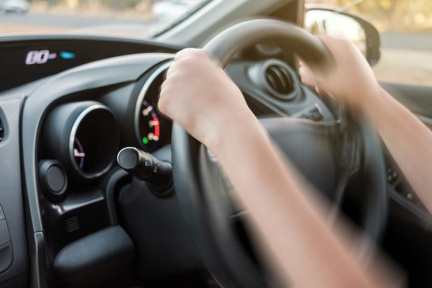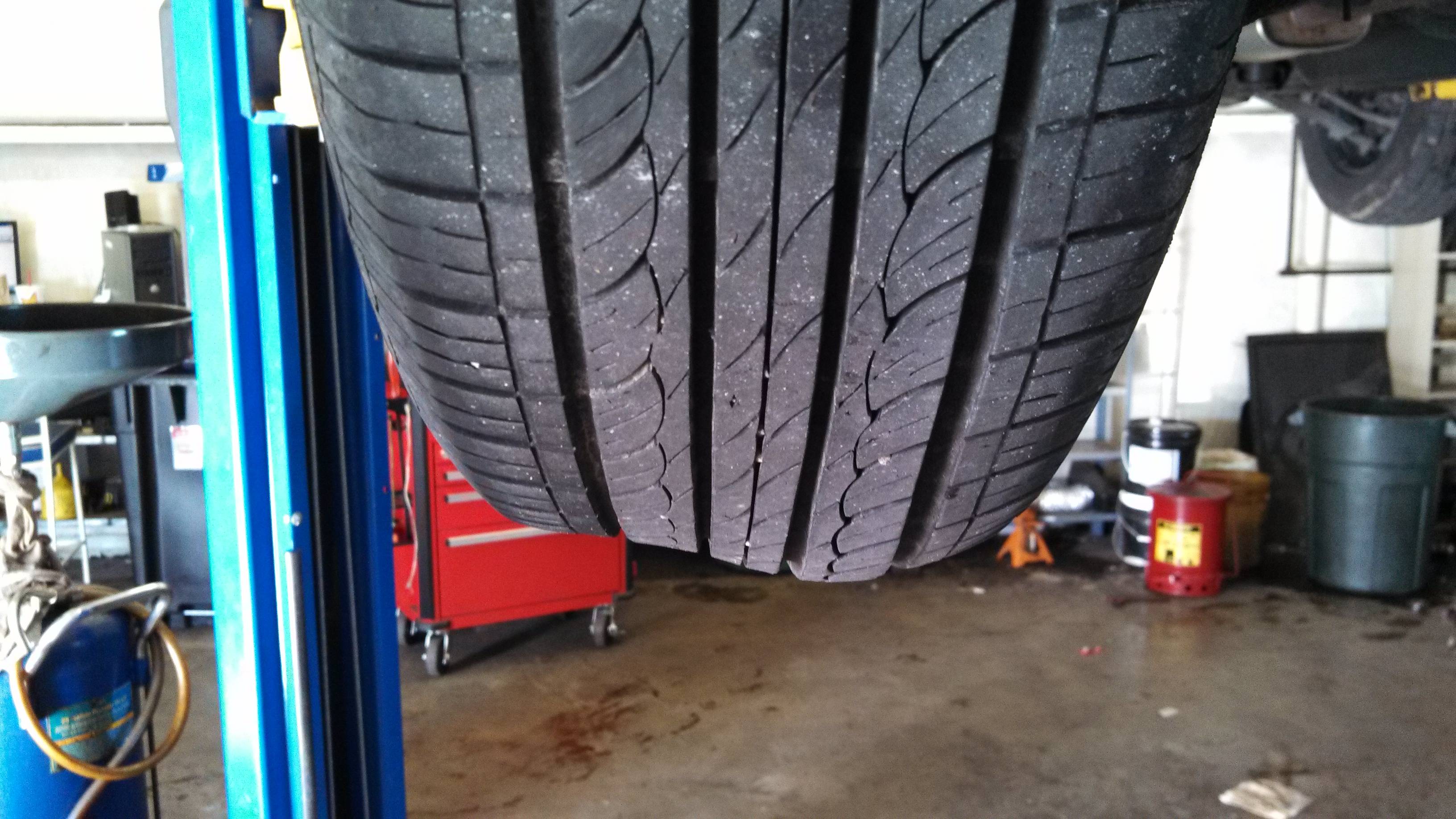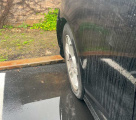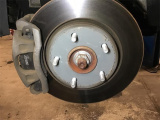
Are you feeling stunned and irritated about your automobile vibration? Learn why your car shakes at high speeds and what to do before driving it becomes dangerous.
We've helped hundreds of clients asking, "Why does my car wobble at high speed?" And this expertise in car maintenance allows us to highlight 5 common causes of car shaking:
- Out-of-balance wheels
- Misaligned wheels
- Wheel damage
- Bad wheel bearings
- Damaged CV joints.
Below we'll get into each problem, name its symptoms, learn the causes, and check for solutions.

5 Causes Your Car Shakes at High Speeds
When your car vibrates at certain speeds, check these top 5 reasons. This will help you understand what's happening with your vehicle and plan the time for its repair.
1. Out-of-balance wheels
Common symptoms. A shaking steering wheel or the entire cabin. Often you can hear rhythmic knocking, slapping, or hissing sounds. The tempo of these noises accelerates or slows down together with the speed.
Speed. The wobble often starts at 50 mph and worsens at around 60 mph. It may decrease as your speed grows.
About wheel balance. When you buy brand-new tires and rims, they're perfectly round, and their weight is equally distributed unless the items have manufacturing defects, which is quite rare.
Initially, tires fit the rims well, and the tread depth is even. But as your mileage increases, the wheels get damaged.
Tires crack, deform, become elastic, or get bubbles because of potholes, extra load, or low pressure. Rims may get warped after even minor collisions or road bumps. Then the center of gravity shifts and causes vibration at high speeds.
If one or two rear wheels are out of balance, you'll feel the vibration throughout the car's body. Unbalanced front wheels will make the steering wheel wobble.
What to do? Go to a car workshop to balance your wheels. Specialists will remove and clamp the wheels in the wheel balancing machine to rotate.
During spinning, sensors detect even a few excessive or insufficient ounces. The mechanic will then attach small weights to your rim to compensate for the imbalance.
Time for maintenance. Wheel balancing typically takes 20 to 45 minutes, depending on the number of workers. However, you'll have to stay longer once technicians identify problems with alignment, suspension, etc.
2. Misaligned wheels
Common symptoms. Your car shakes, or the steering wheel vibrates. Other signs of this problem are asymmetric tire wear and noise from tires. Often your vehicle also won't go straight, pulling to the side.
Speed. A bad wheel alignment will make your car wobble at all speeds. The vibration remains whether you accelerate, brake, or keep the same pace.
About wheel alignment. Normally, the front and rear pairs of wheels are parallel to each other. When looking at the car from above, none of its "toes" would turn in or out.
Each wheel also has to be parallel to a car's longitudinal axis (center line). And finally, your tires have to be perpendicular to the road surface and suspension springs.
When the roads are smooth and even, all the angles remain the same, ensuring optimal performance and tire wear. But if you go through tough routes, off-roads, or areas with potholes, wheels can bend and turn aside. This misalignment causes shaking.

What to do? You need to align your wheels at a car service. The mechanics will take your automobile to a stand and attach electronic sensors to each wheel.
Computers will identify the deviation from the normal values set by the manufacturer. And specialists will fix the suspension angles with specialized tools.
Time for maintenance. Typically, wheel alignment takes about an hour. However, it may take longer if your vehicle needs the replacement of suspension elements.
3. Wheel damage
Common symptoms. "Feels like my tire is wobbling" — that's what people often say when they damage a wheel. And usually, drivers can identify the moment the cabin vibration starts.
Often this happens soon after you unexpectedly hit a curb, a deep pothole, or a speed bump. You can also hear various rhythmic sounds.
Speed. The wobbling may feel at lower speeds, and it will only grow as you accelerate.
About damaged wheels. When you drive obstacles quickly, you can damage either tires or rims. You will probably notice a bent rim, a bubble, or a bulge on a tire if it's on the outer side.
However, finding the damaged area on the inner surface of your wheel is more challenging. Sometimes, the tire may look ordinary but has a torn belt or steel carcass.
Also, you may not notice a cut in your tire all at once, but after a while, it will deflate. All these problems lead to the destabilization of a car and, consequently, vibration.
What to do? See a technician. Once you don't fix the wheel soon after the damage, it may cause wheel disbalance and misalignment problems mentioned above.
Time for maintenance. Rim repair can take 1-2 hours to one day. The time frame depends on the rim type (alloy or steel) and the damage (scratched or bent).
Once you crack a rim, you'll need to replace it, as the risk of a tire blowout is high. Patching a tire can take around half an hour and be quite a permanent fix. If you have a bubble on the sidewall, you'll need to replace such a tire to avoid bursting.
4. Bad wheel bearings
Common symptoms. Your steering wheel vibrates as you drive and can increase or decrease when you turn. Also, the steering wheel might feel looser.
You can hear rumbling, grinding, or humming noises that change as you accelerate. And the car will wobble when you brake.
Speed. Usually, the car shakes more as your mph number grows. The noises will also increase proportionally.
About wheel bearings. These are greased steel balls wrapped in a metal ring (race). They're located behind the hub attaching wheels to a car. The other type is a roller wheel bearing with cylinders instead of metal balls inside.
Wheel bearings minimize the friction between the wheels and the axis, keeping down the temperature. They're sealed with Teflon or rubber, not letting water and dust get inside.
Rotation speeds and mechanical influences make wheel bearings' parts worn down. However, the leading cause of bad wheel bearings is broken seals. Dirt or water makes them grind, which provokes car wobbling.
What to do? Visit a car service and replace the worn wheel bearing. And though you don't have to do it immediately, avoid long rides until you do the change.
Still, there's one of the most dangerous consequences of driving with a worn bearing. It can lock up and get your car stuck.
Time for maintenance. 30 minutes to 2 hours. Older cars have replaceable wheel bearings, but mechanics will need time to remove brake system components to reach them.
The bearings of modern automobiles are parts of non-serviceable wheel hubs. They also include ABS rings and rim flanges and must be displaced as a unit. Changing pressed bearing assemblies takes longer as it requires a hydraulic press.
5. Damaged CV joints
Common symptoms. You feel the vibration caused by this problem during acceleration and turning. Often you'll also hear the knocking noise.
In severe cases, the vehicle can move to the side while turning the steering wheel requires lots of effort.
Speed. The shaking won't feel at low speeds, but it will increase as you go faster. The same is true for the abnormal sounds.
About CV (Constant Velocity) joints.
Vehicles have CV joints on their drive shafts. Inner joints connect to the transmission, while outer ones — to the wheels.
This way, CV joints transfer the torque from the transmission to the wheels, making your car go as you press the gas pedal. Also, these joints bear suspension movements.
A protection cover wraps each CV joint, called a CV joint or drive axle boot. These covers are made of rubber and plastic, which seal the greased mechanism inside.
CV joints are highly durable and long-lasting until the boot is undamaged. But dirt and water get in once it's cracked or perforated, and the grease goes out.
Corrosion and friction make the joint mechanism wear faster. And that's when car vibration and warning noises come in.
What to do? Go to a car workshop. Mechanics will only need to get you a new boot and add fresh grease if your CV joint is undisturbed. Otherwise, you'll have to replace it, and often you'll have to buy an entire kit, including clamps and grease.
Time for maintenance. 1 to 3 hours. The good news is once you need to replace the damaged CV joint, you won't have to change it on the other side.
Wrapping up
Damaged rims, unbalanced tires, and misaligned wheels are the main causes for your car shaking after hitting 60 mph. Worn wheel bearings and CV joints follow, and this list can continue. But no matter the problem, the key recommendation is: if your car vibrates at high speed, take it to the service soon.
Same articles

Wheel Bent Inwards After Hitting Curb
GuidesAccidents occur ranging from minor incidents to more severe ones. Even seemingly minor mishaps, like hitting a curb, can result in some level of damage to your vehicle. On occasion, after such an...

White Trucks With Black Rims
GuidesMany pickup truck drivers may not place significant emphasis on the appearance of their vehicles. However, a closer look at Google search statistics reveals that each month, thousands of individuals...

How to Clean Brake Rotors without Removing Wheels
GuidesYour life is always at risk if any part of your vehicle is compromised; the same is true with brake rotors. To ensure you are secure while driving, clean brake rotors are essential. However, it...

Discussion